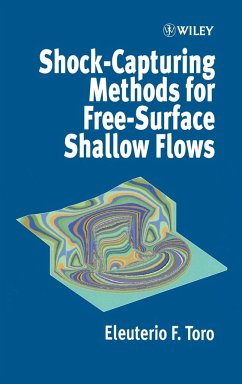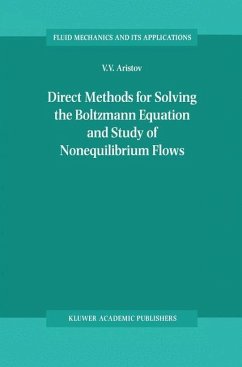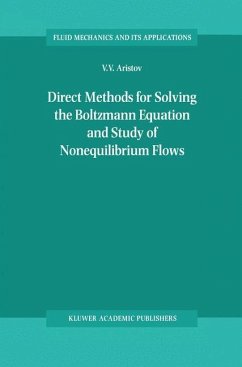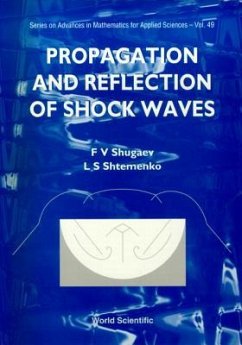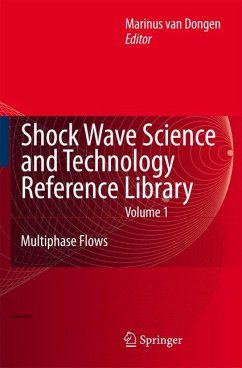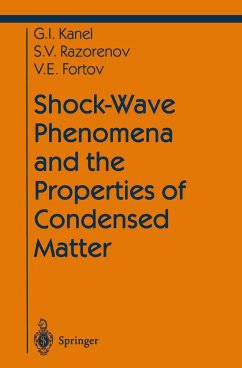
An Investigation of Shock Wave Physics via Hybrid CFD-BGK Solution Methods for Nonequilibrium Flows
Versandkostenfrei!
Versandfertig in über 4 Wochen
28,99 €
inkl. MwSt.
Weitere Ausgaben:

PAYBACK Punkte
14 °P sammeln!
The Unified Flow Solver, a hybrid continuum-rarefied code, is used to investigate the internal structure of a normal shock wave for a Mach range of 1.55 to 9.0 for Argon, and 1.53 to 3.8 for diatomic Nitrogen. Reciprocal shock thickness, density, temperature, heat flux, and the velocity distribution function are calculated for a one-dimensional shock wave and compared with experimental data from Alsmeyer and DSMC results from Bird. Using the Euler, Navier-Stokes, BGK model, and Three-Temperature BGK model schemes, results from UFS compare well with experiment and DSMC. The Euler scheme shows a...
The Unified Flow Solver, a hybrid continuum-rarefied code, is used to investigate the internal structure of a normal shock wave for a Mach range of 1.55 to 9.0 for Argon, and 1.53 to 3.8 for diatomic Nitrogen. Reciprocal shock thickness, density, temperature, heat flux, and the velocity distribution function are calculated for a one-dimensional shock wave and compared with experimental data from Alsmeyer and DSMC results from Bird. Using the Euler, Navier-Stokes, BGK model, and Three-Temperature BGK model schemes, results from UFS compare well with experiment and DSMC. The Euler scheme shows atypical results, possibly resulting from modifications made to include internal energies. An entropy spot is introduced into a two-dimensional domain to investigate entropy-shock interactions over a range of Knudsen numbers (Kn=0.01, 0.1, and 1.0) for Mach 2.0 in Argon. Previous work on entropy-shock interactions has only been performed using an Euler scheme. Here, results are presented in Argon using coupled BGK and Navier-Stokes solvers. Density, pressure, and temperature profiles, as well as the profiles of their gradients, are reported at certain times after the entropy spot convects through the shock. This work has been selected by scholars as being culturally important, and is part of the knowledge base of civilization as we know it. This work was reproduced from the original artifact, and remains as true to the original work as possible. Therefore, you will see the original copyright references, library stamps (as most of these works have been housed in our most important libraries around the world), and other notations in the work. This work is in the public domain in the United States of America, and possibly other nations. Within the United States, you may freely copy and distribute this work, as no entity (individual or corporate) has a copyright on the body of the work. As a reproduction of a historical artifact, this work may contain missing or blurred pages, poor pictures, errant marks, etc. Scholars believe, and we concur, that this work is important enough to be preserved, reproduced, and made generally available to the public. We appreciate your support of the preservation process, and thank you for being an important part of keeping this knowledge alive and relevant.



